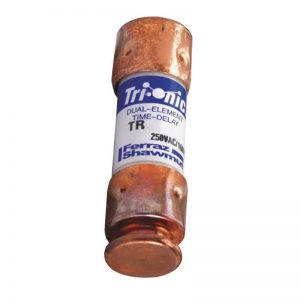Time Delay Fuse vs Fast Acting Fuse
A fuse is a protective device that keeps electrical appliances safe in the event of a surge of electrical current. They come in various types. One category differs from the other in terms of functions and response time to a peak of electricity. Depending on these features, you can divide them into time delay and fast acting fuses. You have to have a clear concept of time delay fuse vs first acting fuse to know their purposes and uses.
What Is a Time Delay Fuse?
Some electrical devices need a high inrush of current to start their function. These time-delay or slow-blow fuses can sustain overloads for a limited period. They are perfect for those electronics as they allow the initial surge of power without destroying the circuit.
What Is a Fast Acting Fuse?
Unlike the time-delay version, it does not have the capacity to withstand temporary overloads. It gives a quick response to electric spikes and then protects the devices by breaking the circuit.
How to Differentiate a Time Delay and Fast Acting Fuse?

It’s a simple task since the devices come with a manufacturer’s label that indicates their type. It is a time-delay if the label reads “T” or “S” and it’s a fast acting if it reads “F”. If there’s no label, you will find engraved lettering on the housing of the fuse.
Another way to find out the difference is to look into the glass tube of the fuse. A thick wire with a tiny spring at one end makes it a slow-blow fuse while a thin wire means that it’s a fast acting fuse.
Identification is necessary since using the wrong type will damage your equipment. There will also be the risk of suffering serious injury or the worst – electrocution.
Time Delay Fuse vs Fast Acting Fuse
The main function of a fuse is to melt the wire inside during overloads, and disconnect the electricity flow into that circuit. All types of fuses will blow out, but the differences lie in how and what leads to that blowing. Take a look at the time delay fuse vs fast acting fuse analysis to know how they actually differ in functions.
Current Rating
A time delay fuse has the capacity to sustain transient pulse currents, which is not the strong suit of a fast-acting model. The slow-blow version can withstand the electrical surge in a repeated cycle upon switching the power on/off.
It has a higher I2t value which means that it takes more energy to blow out than its fast-acting counterpart with the same rating. For example, if you send 40 amp current through a 30 amp fast-blow fuse, it will blow almost immediately. But, a slow-blow one will melt its fuse wire after a specific period, within 10 or 15 seconds.
Protection
Many people think that time delay fuses are less effective because they allow current overloads pass through the circuits. Well, it’s not true. They are used only for those tools and appliances that need a high voltage current to start their operation. They still protect the electronics when the overcurrent lasts, and the corresponding heat buildup exceeds the I2t limit.
In fact, the protection does not depend on the timing difference. The problem could happen only when you use the wrong fuse. For example, using a slow-blow type for a sensitive device, such as a computer, will damage it by allowing electrical surge into its internal circuit. Similarly, a fast-blow type for a fluorescent lamp will cause repeated blowing up because the bulbs need high-voltage current at the beginning to glow.
Applications

Time delay fuses are suitable for capacitive circuits that need power surges upon power input/output or on/off. The most familiar devices that use such circuits are electric motors and fluorescent lights.
Fast acting fuses are perfect for resistive circuits that include IC and other sensitive mechanisms. Even the slightest spike in electrical current can damage these components. So, these fuses are the right choice for them. The appliances that use such circuits are laptops, digital cameras, DVD players, and more.
Except for circuits using IC components, the slow-blow fuses can replace their fast-blow counterparts in other applications. It will increase the anti-surge capacity of those devices. The fast acting ones cannot take the place of the time delay models, though. Their fuse wire will melt because of the initial excess supply of electricity.
However, replacing the fast acting fuses with the time delay versions will not be cost-effective because the latter is more expensive.
Conclusion: Which One Is Better?
You might have figured out from the above discussion about time delay fuse vs fast acting fuse that it’s not a question of which one is better but which one is the right choice for a specific purpose. You have to pick them up depending on the device and circuit types. Also, be careful to use a similar fuse with same amp rating when you are replacing a defective one.
